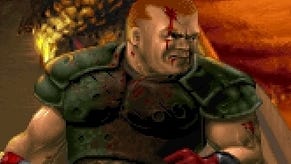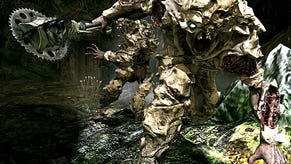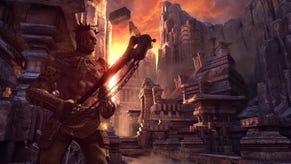Rage: The Return of id Software
Catching up with Tim Willits at the Eurogamer Expo.
On the year of id Software's 20th anniversary in the games business, the legendary Texas-based outfit is finally ready to unleash its latest game - the potentially incredible Rage, which fuses a fresh spin on the traditional id-style FPS action with vehicles and a massive open world.
While it's been many years since the last tentpole id title was released, the company's legacy and influence has persisted. Having defined the core multiplayer deathmatch experience in 1993's Doom and dictated the development of cutting-edge 3D rendering up until the release of the current-gen consoles, it seems somewhat appropriate that the most popular online games of today are essentially spiritual successors to id's finest work. Call of Duty's multiplayer is the latest iteration of the gameplay developed in these classics, and the rendering code itself still retains elements of id technology.
But in the here and now, how can id's unique approach with Rage compete against the FPS juggernauts in what is the most fiercely competitive area of the core games business? At this week's Eurogamer Expo, Digital Foundry sat down to talk tech, design and dev culture with Tim Willits, creative director of id Software.
It's very exciting. It's funny though - id Software studio - we have no green discs (what we call retail discs) because we needed them all for events. So we don't actually have them yet. It's exciting, it's the 20-year anniversary, we have a brand new game, brand new technology. We're on all the platforms, which we've never done before. Rage is definitely a game that's different from any title we've done, it's had a great reception so far. It's a good time to be at id Software right now.
We're not there working late Sunday nights, I can tell you that, but you're right, times are much different. Marketing the title, finalising the title, making sure that we have worldwide shipping. It's so much different than it used to be. Back in the days of Quake 1, I remember Carmack would say, "Hey Tim, can you play through it?" and I'd say, "Yep! I'm done". And he'd say, "OK, upload it to the internet, let's go across the street to Razzoo's and get some food."
Those days are definitely gone but it is really exciting. Of course, we're working on some patch issues, we have some DLC in the works and we're still doing these tours, we have events coming up, so it's definitely busy but it's also very exciting. Game launches are so much bigger. There's such a world focus. It's so much more exciting than it was back in the Quake days.
Well, after we worked on Doom 3, a number of us worked with other studios on some of our IPs and some of us worked on a brand new game that at the time was codenamed Darkness, but it was completely different from Rage. When John prototyped what he could do with the Mega Texture technology, building these much larger outdoor areas, the idea just hit me. That's it. We can make a game with this, and Rage was spun up and we actually threw away around a year and a half of work. So it was kind of a Eureka moment which was fed from this prototype, but John works much more closely with us on the design than most people realise. The urban legend is that John handles all the tech and doesn't do anything with the design.
Ahhh, usually that's true! There are aspects to the tech which are very tricky that John likes to do a little research on... he doesn't actually do that much anymore. He has two kids and his wife would kick him in the butt if he did that but yes, sometimes he does take off and focus - but he works just as hard coding as he did 20 years ago.
Yes, it's a virtualised world. The word "Mega Texture" isn't exactly correct. Virtualised world is more correct, but Mega Texture sounds cooler! Basically what that allows us to do is uniquely paint all the environments differently. It allows us to have some really interesting areas, for new scenes to be fresh and exciting, you're not stuck in the same buildings for 15 hours, and it really creates a look that is unique to Rage. And when you see it running, it's like: yeah, that's Rage. And that's based on the virtualisation of everything.
Yes, the raw texture is ridiculously huge. It's terabytes. But through John Carmack wizardry, we're able to pare down all the textures and the assets that we need to reasonably fit on any system. People always ask me - why's Rage so big? It's because of the texture data, but it is very unique. It has a very beautiful style to it, it runs real fast because the world, the visuals, are all virtualised.
It creates extra space for game code, rendering, physics, sound... all those things. That's why we can run at 60Hz which is what gives us that good connection to the game. And of course, it's all cross-platform so all the assets that are created for the PC version are just the same on the PS3 and 360.









